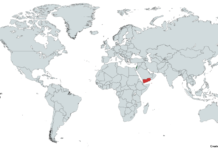Yesterday, in Stresa, Italy, finance ministers from the Group of Seven (G7) industrial democracies discussed the possibility of utilizing future income from frozen Russian assets to aid Ukraine. This initiative emerges as a part of the ongoing response to the conflict initiated by Russia’s invasion of Ukraine in February 2022.
The G7, which includes the United States, Japan, Germany, France, Britain, Italy, and Canada, has collectively immobilized around $300 billion of Russian assets. These assets, comprising major currencies and government bonds, are primarily held in European-based depositories. The discussions, still in their early stages, involve complicated legal and technical challenges that need to be addressed before any concrete financial mechanisms can be implemented.
According to a draft statement viewed by Reuters, the G7 is actively exploring ways to “bring forward the extraordinary profits stemming from immobilized Russian sovereign assets to benefit Ukraine.” This statement reflects a cautious approach, lacking specific details or figures, as the negotiators continue to grapple with the intricacies of the potential financial arrangements.
The context of these discussions is critical as Ukraine continues to defend itself against a protracted Russian military offensive. The situation on the ground remains dire, with the Ukrainian military stretched thin and in desperate need of support. The proposed use of frozen Russian assets could provide a substantial financial boost to help Ukraine manage its defense and potentially rebuild in the aftermath.
Moreover, the plan has garnered cautious optimism among G7 members. Canadian Finance Minister Chrystia Freeland expressed confidence in reaching a consensus, suggesting the assets could act as security for a proposed $50 billion loan to Ukraine. This loan would significantly enhance Ukraine’s ability to sustain its military efforts and address its immediate financial needs.
However, the proposal is not without its controversies. Various legal and ethical questions have been raised, particularly concerning the precedent such an action might set. The discussion also touches on broader geopolitical tensions, notably with China. The G7 finance ministers also expressed concerns about China’s industrial policies, which they argue undermine economic resilience and fairness in global trade, indicating a broader context of global economic tensions.
In addition to financial discussions, the G7 meeting addressed other pressing issues, including maintaining banking connections between Israeli and Palestinian banks and reaffirming commitments to stable currency exchange rates. These discussions reflect the group’s broader goals of ensuring global stability and addressing international economic challenges in a coordinated manner.
As the G7 finance ministers conclude their meeting in Stresa, the focus shifts to the upcoming G7 summit in mid-June, where leaders are expected to deliberate further on the Ukraine funding plan. The outcomes of these discussions could have lasting implications for international financial policies and the ongoing conflict in Ukraine.
The global community watches closely as these developments unfold, highlighting the critical role of international financial decisions in geopolitical conflicts. The G7’s exploration of using frozen Russian assets for Ukraine not only addresses immediate financial needs but also sends a strong signal regarding the international community’s stance on the conflict in Ukraine.
Image is licensed under the Creative Commons Attribution 3.0 Italy license and was created by Italian G7 Presidency.









